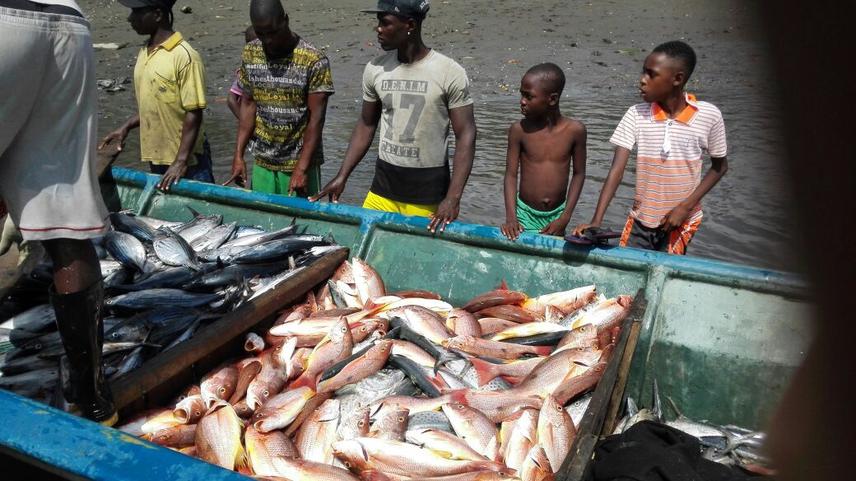Pilar Herron
Assess the effect of different artisanal fishing gears on indicators related to the long-term sustainability of this type of fisheries in the Colombian Pacific coast.

An abundant catch with purse sein net.
The artisanal fisheries in Colombia are multi-gear, multi-species and labor intensive, with remote and diverse landing sites. Despite the limitations of fisheries statistics in the country, there is recent evidence of a high proportion of juvenile fish (below the size of maturity) in the catch of some economically important species of the Pacific coast, which could be a sign of overfishing. In recent years, community-based management initiatives have developed in some areas of the coast, with a focus on fishing-gear restrictions. Parallel to these local initiatives, different market incentives are being promoted by environmental non-government institutions (NGOs) to promote the adoption of better fishing practices, linking local fisheries organizations to high-end markets in the main cities.
However, the implementation of fishing gear restrictions without specific knowledge about their ecological and socio-economic implications could lead to unexpected and undesired consequences. For example, promoting the massive use of a specific type of fishing gear, based on its higher selectivity, could increase the pressure on certain stocks and on certain habitats. On the other hand, access to better markets that provide higher economic income to fishers could result in fishers’ specialization for particular stocks, not only increasing the risk of over exploitation of target species but also reducing the capacity of fishers to adapt to changing environmental conditions that affect stocks.
During the course of this project, we will examine the catch composition of species caught with the most common artisanal fishing gears, examine temporal variations in catch abundance and composition, and identify the factors and trade-offs behind the choice of fishers for the use of fishing gears. This assessment will be made at two sub-regions of the Pacific coast of Colombia: Northern Chocó and Buenaventura. These sub-regions represent the diversity and complexity of the environmental and socio-economic factors related to the artisanal fishing activity, so that general and distinctive patterns can be identified.
Field activities will extend for 12 months (August 2016 to July 2017) with data collection focusing on the Buenaventura sub-region at three coastal communities. In the case of the sub-region Northern Chocó, a database of fisheries monitoring data is already available for the period 2011-2014 and will be provided by MarViva Foundation through an agreement with the principal researcher.